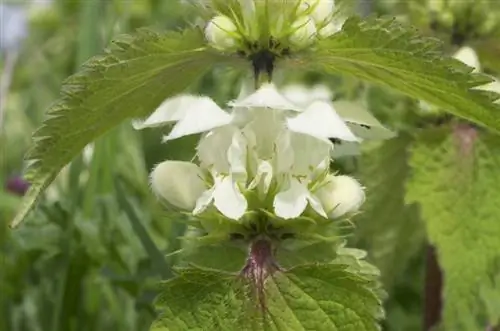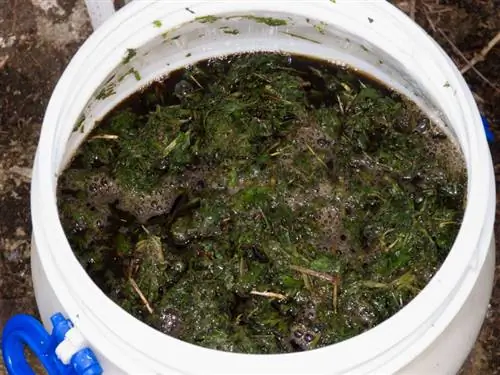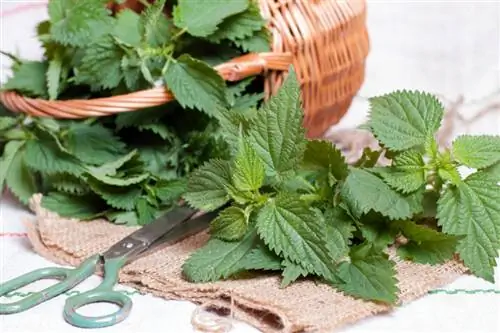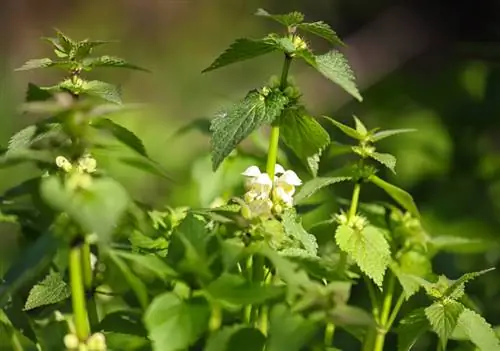- Author admin [email protected].
- Public 2023-12-16 16:46.
- Last modified 2025-01-23 11:22.
In a direct comparison, the risk of confusion between dead nettle and stinging nettle cannot be overlooked. To tell the difference, you can touch the hairy leaves or consult these tips. You will be on the safe side from burns after reading these tips.
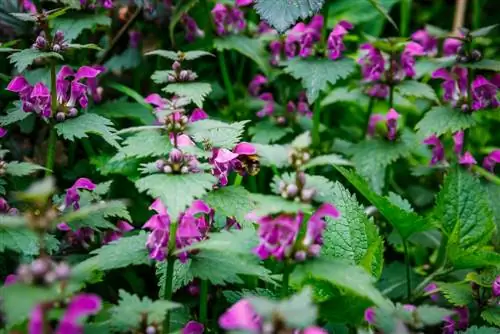
What is the difference between dead nettle and stinging nettle?
The main difference between dead nettle and stinging nettle is that the former has no stinging hairs and blooms with labiate flowers, while the latter has stinging hairs and causes unpleasant itching. Deadnettles are also smaller and belong to a different plant family.
What is the difference between dead nettle and stinging nettle?
The deadnettle hasno stinging hairs, blooms with beautifullip flowersand is clearlysmaller, than the nettle. Furthermore, dead nettle and stinging nettle are not related. Details worth knowing about the most important differences:
- Family: Deadnettle (Lamium) is a mint family (Lamiaceae) - Stinging nettle (Urtica) is one of the nettle family (Urticaceae).
- Growth height: dead nettle 20 cm to 50 cm, stinging nettle 50 cm to 300 cm.
- Flowering time: dead nettle from April to October, stinging nettle from July to November.
- Tangible difference: dead nettle does not burn, nettle causes painful itching for hours.
Are there similarities between dead nettle and stinging nettle?
With theirhairy, heart-shaped leaves, deadnettle and stinging nettle look very similar. Both plants are perennial and prefer a shady location on the edge of a forest or path with nitrogen-rich, fresh, moist soil.
Both wild perennials have been valued as edible medicinal plants since the Middle Ages. Deadnettle tea relieves respiratory diseases. Leaves and roots of nettles have a diuretic, analgesic and anti-inflammatory effect.
Tip
Bumblebees would plant deadnettle
Early in the year, deadnettle flowers invite bumblebees to harvest nectar and pollen. The flowers are shaped in such a way that the sugar-rich nectar (up to 52%) is only accessible to long-pronged insects such as bumblebees and ground bees. Highly recommended as a fragrant feast for the eyes and nutritious pasture for bees are magnificently flowering deadnettle species, such as white deadnettle (Lamium album), purple deadnettle (Lamium purpureum) and golden nettle (Lamium galeobdolon).


